
Physicochemical Problems of Mineral Processing
Scope & Guideline
Fostering Collaboration in Economic Geology and Beyond
Introduction
Aims and Scopes
- Mineral Processing Techniques:
The journal emphasizes various mineral processing methodologies, including flotation, magnetic separation, and hydrometallurgical techniques, highlighting innovations and improvements in these areas. - Physicochemical Studies:
Research published in the journal often investigates the physicochemical interactions involved in mineral processing, including surface chemistry, adsorption mechanisms, and the influence of ionic species on flotation performance. - Sustainable Practices:
A growing focus on sustainability is evident, with studies exploring eco-friendly reagents, recycling, and the recovery of metals from electronic waste, reflecting a commitment to reducing environmental impact. - Application of Advanced Technologies:
The journal includes research on the application of modern technologies such as artificial intelligence, machine learning, and numerical simulations to optimize mineral processing operations. - Characterization of Minerals:
Detailed characterization studies of various minerals and ores are a core focus, providing insights into their properties and how these influence processing efficiency.
Trending and Emerging
- Machine Learning and AI Applications:
There is a growing trend in the application of machine learning and artificial intelligence to optimize mineral processing operations, enhance flotation performance, and predict outcomes based on complex datasets. - Sustainable and Green Processing:
An increasing number of studies focus on sustainable practices, including the use of biodegradable reagents, recycling of materials, and methods for reducing waste in mineral processing. - Recovery from E-Waste:
Research on the recovery of valuable metals from electronic waste is emerging as a significant theme, addressing both resource recovery and environmental concerns related to e-waste disposal. - Nanotechnology in Mineral Processing:
The incorporation of nanotechnology, particularly in flotation and separation processes, is becoming more prevalent, highlighting its potential to enhance recovery rates and selectivity. - Advanced Characterization Techniques:
Studies utilizing advanced characterization techniques, such as X-ray diffraction and electron microscopy, are increasing, providing deeper insights into mineral properties and processing behavior.
Declining or Waning
- Traditional Flotation Reagents:
Research centered on conventional flotation reagents and their applications seems to be decreasing, possibly due to the rise of novel, environmentally friendly alternatives that offer better performance. - Basic Gravity Separation Techniques:
Studies focused on basic gravity separation methods have become less frequent, indicating a potential shift towards more complex and integrated processing methods that prioritize efficiency and recovery. - Metallurgical Evaluations of Conventional Ores:
There is a noticeable decline in papers that evaluate traditional metallurgical processes for common ores, as the focus shifts towards more complex ores and innovative recovery methods. - Classic Mineral Characterization Methods:
Research employing classic mineral characterization techniques, such as standard microscopy, appears to be waning, replaced by more advanced analytical methods that provide deeper insights into mineral properties. - Single-Process Studies:
The journal has seen fewer studies that focus solely on one type of processing method, suggesting a trend towards integrated approaches that combine multiple techniques for improved results.
Similar Journals
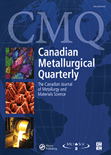
CANADIAN METALLURGICAL QUARTERLY
Exploring the Depths of Metallurgical Engineering.Canadian Metallurgical Quarterly is a prestigious scholarly journal published by Taylor & Francis Ltd, dedicated to the field of metallurgical engineering and materials science. With a rich history dating back to its inception in 1962 and continuing through its most recent publications, this journal serves as a vital platform for the dissemination of innovative research, advancements, and critical reviews in metallurgy, metals, and alloys. Positioned strategically within the academic community, it holds a significant impact factor and is currently rated in the Q2 category for Metals and Alloys, and Q3 in Industrial and Manufacturing Engineering as of 2023, showcasing its authoritative role in these disciplines. Although it does not offer open access, the journal remains widely recognized for its rigorous peer-review process, ensuring that published work adheres to the highest standards of scientific quality. Researchers, professionals, and students alike will find invaluable insights and contributions that drive the field forward.
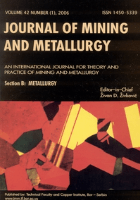
Journal of Mining and Metallurgy Section B-Metallurgy
Advancing knowledge in metallurgy and materials science.Journal of Mining and Metallurgy Section B-Metallurgy is a prominent open-access journal published by the Technical Faculty, Bor-Serbia. Established in 2002, the journal has become a vital platform for disseminating high-quality research in the fields of metallurgy, geotechnical engineering, and materials sciences. With an E-ISSN of 2217-7175, the journal has successfully converged its publication years from 2007 to 2024, indicating its commitment to ongoing academic discourse. The journal is currently ranked Q3 in multiple categories including Geotechnical Engineering and Engineering Geology, Materials Chemistry, Mechanics of Materials, and Metals and Alloys, reflecting its importance in academic research and professional practice. With a Scopus rank that positions it within the 30th percentile across various related disciplines, the Journal of Mining and Metallurgy Section B-Metallurgy serves as an invaluable resource for researchers, professionals, and students who seek to explore cutting-edge advancements in metallurgy and materials science. It provides vital insights that contribute to the development and innovation in these essential fields.

JOURNAL OF SURFACTANTS AND DETERGENTS
Empowering Knowledge in Surfactant ScienceJournal of Surfactants and Detergents, published by Wiley, is a prominent peer-reviewed journal dedicated to advancing scientific knowledge in the field of surfactants, detergents, and their applications. With an ISSN of 1097-3958 and an E-ISSN of 1558-9293, this journal serves as an essential resource for researchers, industry professionals, and students specializing in Chemical Engineering, Physical and Theoretical Chemistry, and Materials Science. Since its inception in 1998, the journal has fostered innovative research and multidisciplinary collaboration, reflected in its current Q3 ranking in several Scopus categories. Although it operates under a traditional publishing model, the journal's robust research contributions continue to engage a wide audience eager to explore the latest developments in surfactant and detergent science. As a key player in the field, the journal not only publishes cutting-edge research but also facilitates dialogue and knowledge exchange, making it an invaluable asset for anyone invested in the chemistry of surfaces and interfaces.
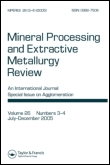
Mineral Processing and Extractive Metallurgy Review
Bridging Knowledge and Practice in Metallurgical EngineeringMineral Processing and Extractive Metallurgy Review, published by Taylor & Francis Inc, is a leading academic journal dedicated to advancing the field of mineral processing and extractive metallurgy. With a strong focus on innovative research and methodological advancements, this journal serves as a critical resource for researchers, professionals, and students alike, offering insights into the latest developments in the extraction and processing of minerals. Currently holding a prestigious Q1 ranking across multiple categories, including Chemistry (Miscellaneous), Economic Geology, and Mechanical Engineering, it demonstrates a significant impact in the scientific community, evidenced by its ranking in the 93rd percentile in Mechanical Engineering and Geotechnical Engineering. This journal is pivotal for anyone involved in the study and application of mineral resources, making it an essential read for those looking to deepen their understanding of the relationship between mineralogy and technology-driven solutions in modern engineering. In addition to its traditional subscription-based model, the journal aims to promote wider accessibility to such crucial knowledge within the industry.
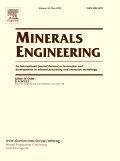
MINERALS ENGINEERING
Advancing Innovations in Minerals Processing and EngineeringMINERALS ENGINEERING, an esteemed journal published by PERGAMON-ELSEVIER SCIENCE LTD, is at the forefront of disseminating cutting-edge research in the fields of minerals processing, geotechnical engineering, and control systems. Since its inception in 1988, this journal has become a pivotal platform for researchers, professionals, and students alike, offering insights and advancements that contribute significantly to both academia and industry. With a strong emphasis on interdisciplinary approaches, MINERALS ENGINEERING is ranked in the top quartile (Q1) for multiple engineering categories, including Mechanical Engineering and Geotechnical Engineering, highlighting its relevance and influence in the global scientific community. Although not an open access journal, it provides comprehensive analyses and robust methodologies that are critical for advancing technological innovations and environmental sustainability within engineering. Researchers can rely on this journal to stay informed about the latest developments, trends, and challenges they face in the field, ensuring they are at the forefront of minerals engineering research.

JOURNAL OF THE INDIAN CHEMICAL SOCIETY
Bridging Academia and Industry in the Chemical RealmJournal of the Indian Chemical Society, published by Elsevier, stands as a cornerstone in the field of chemistry, particularly representing the rich chemical research emanating from India.
With a significant history dating back to its establishment, this journal encompasses diverse disciplines including Drug Discovery, Electrochemistry, Inorganic Chemistry, Organic Chemistry, and Physical and Theoretical Chemistry, reflecting the evolving landscape of chemical sciences.
Despite being positioned in the Q3 category across multiple quarters, the journal demonstrates promising rankings in various chemistries, highlighting its commitment to advancing the knowledge and application of chemical sciences. While currently not available as an open access journal, the Journal of the Indian Chemical Society is dedicated to providing a platform for high-quality research that fosters innovation and collaboration among researchers, professionals, and students worldwide.
With its continuous publication from 1973 to the present, it serves as an essential repository for cutting-edge findings and developments in chemistry, striving to connect academia with industry and practice.

JOURNAL OF MINING SCIENCE
Bridging Academia and Industry in Mining ScienceJOURNAL OF MINING SCIENCE, published by PLEIADES PUBLISHING INC, is a leading platform for research and development in the fields of geology, geotechnical engineering, and engineering geology. With an ISSN of 1062-7391 and E-ISSN of 1573-8736, this journal has established itself as a notable contributor to the mining and earth sciences communities since its inception in 1991. The journal is indexed in prestigious databases and currently holds a Q3 ranking in both geology and geotechnical engineering categories, recognizing the impact and quality of the research it publishes. Although it does not offer open access, it provides extensive insights from cutting-edge studies that appeal to researchers, professionals, and students alike. The Journal of Mining Science aims to disseminate significant advancements in mining technology and its environmental implications, promoting sustainability and innovation within the industry. With its comprehensive scope and commitment to excellence, this journal serves as an invaluable resource for stakeholders in academia and industry striving to enhance their knowledge and practices in mining science.
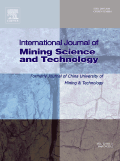
International Journal of Mining Science and Technology
Exploring the Future of Geotechnical Engineering and SustainabilityThe International Journal of Mining Science and Technology, published by ELSEVIER, is a premier open access journal that has been at the forefront of disseminating groundbreaking research in the fields of mining science, geotechnical engineering, and environmental sustainability since its inception in 2012. With a commendable impact factor and distinguished quartile rankings—including Q1 status in Energy Engineering, Geochemistry and Petrology, and Geotechnical Engineering—this journal stands as a vital resource for researchers, professionals, and students alike. The journal's commitment to open access since 2017 ensures that the latest advancements in mining techniques, energy solutions, and geological innovations are readily available to the global research community. With consistently high rankings in Scopus and a strong percentile performance, the International Journal of Mining Science and Technology plays a crucial role in shaping the future of mining and earth sciences, making it a must-read for anyone involved in these dynamic fields.
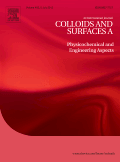
COLLOIDS AND SURFACES A-PHYSICOCHEMICAL AND ENGINEERING ASPECTS
Innovating Solutions Through Interdisciplinary ResearchCOLLOIDS AND SURFACES A-PHYSICOCHEMICAL AND ENGINEERING ASPECTS is a prestigious journal published by Elsevier, focusing on the interdisciplinary domains of colloid and surface chemistry, physical and theoretical chemistry, and engineering aspects. With an impressive impact factor and consistently high rankings—Q2 in Colloid and Surface Chemistry, and Q1 in both Physical and Theoretical Chemistry as well as Surfaces and Interfaces—it stands as a vital resource for researchers and professionals seeking to advance their understanding in these critical areas of study. Established in 1993, the journal spans over three decades of publication, gathering robust interdisciplinary insights that cater to both fundamental research and practical applications. While the journal is not currently open access, it remains an essential platform for disseminating innovative studies that explore the physicochemical properties of colloidal systems and surface interactions. Based in the Netherlands, the journal actively encourages contributions that enhance the scientific community’s knowledge and application of these complex phenomena, making it an indispensable tool for students and professionals alike in their quest for cutting-edge advancements.

JOURNAL OF SOLUTION CHEMISTRY
Transforming Understanding of Solution PhenomenaJournal of Solution Chemistry, published by Springer/Plenum Publishers, offers a vital platform for researchers and professionals engaged in the complex interplay of substances in solution, focusing on the interdisciplinary aspects of Biochemistry, Biophysics, Molecular Biology, and Physical and Theoretical Chemistry. Established in 1972 and traversing to 2024, this journal features extensive research articles that contribute significantly to the understanding of solution chemistry phenomena. Although it is categorized as Q4 in Biochemistry and Molecular Biology and Q3 in Biophysics and Physical and Theoretical Chemistry, the journal is set apart by its commitment to fostering innovative studies and methodologies within these domains. With an ISSN of 0095-9782 and an e-ISSN of 1572-8927, it remains accessible to a wide range of scholarly audiences despite the absence of open access options. As an essential resource for anyone invested in the foundational aspects of chemical interactions, the Journal of Solution Chemistry continues to shape the discourse in solution-based research, making it a critical asset for ongoing academic pursuits.